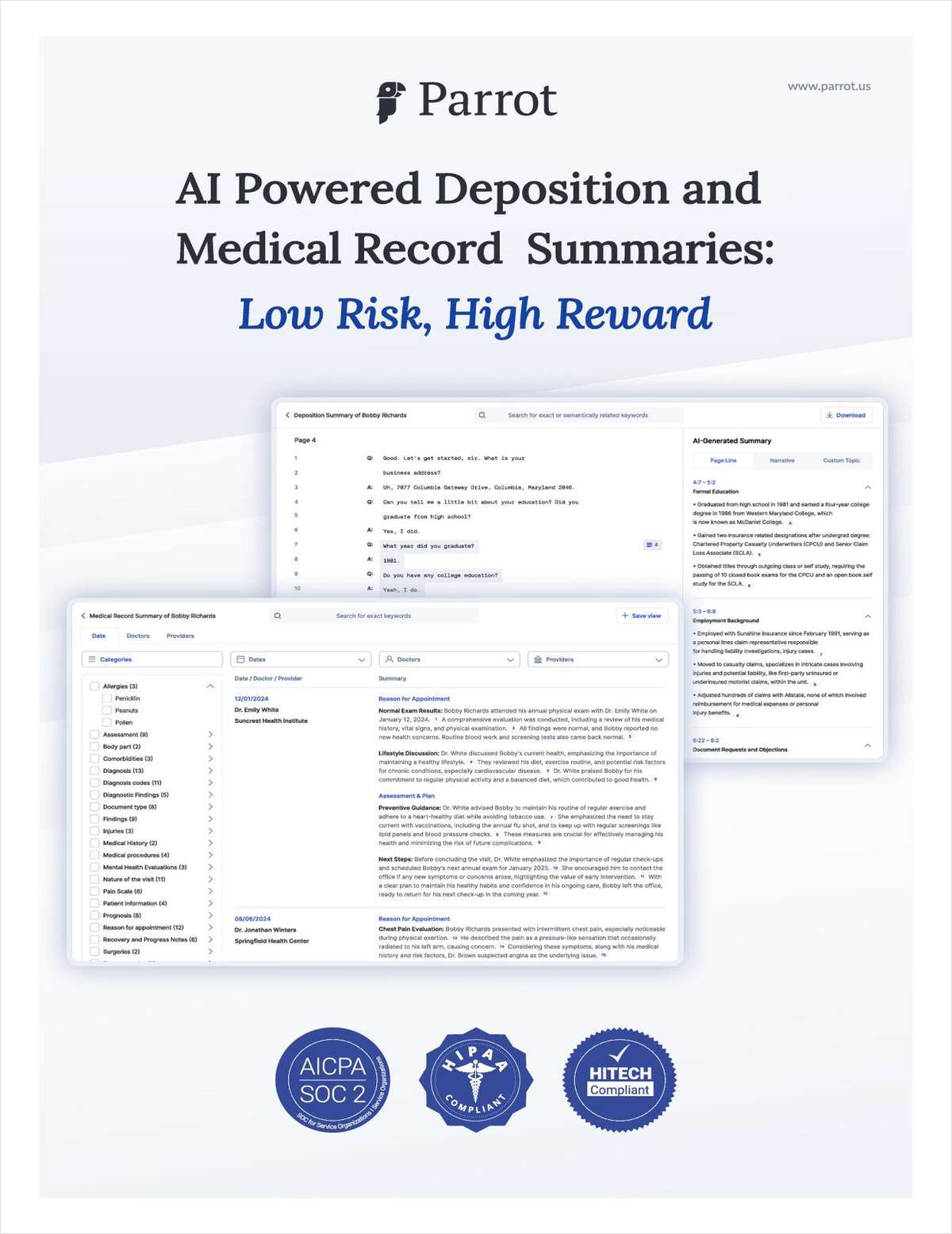The Confounding Paradox of Marketing Investment for Struggling Law Firms
“You have to spend money to make money.” Or, so holds the well-worn cliché. For those firms struggling to find meaningful growth in today's market, where do they find the funds they need to spend in order to spur growth?
January 17, 2019 at 12:00 PM
6 minute read
This article appeared in Marketing the Law Firm, an ALM/Law Journal Newsletters publication reporting on the latest, and most effective, strategies for Chief Marketing Officers, Managing Partners, Law Firm Marketing Directors, Administrators and Consultants.
Paradox. Conundrum. Quandary. Any of these terms could be used to describe the situation in which law firms searching for growth in today's legal market find themselves.
“You have to spend money to make money.” Or, so holds the well-worn cliché.
Nevertheless, for those firms struggling to find meaningful growth in today's market, where do they find the funds they need to spend in order to spur growth?
In our recently released 2018 Dynamic Law Firms Study, the Legal Executive Institute undertook an in-depth examination of two juxtaposed populations of law firms: dynamic firms, which we defined as those law firms experiencing market-leading growth in revenue-per-lawyer, overall firm profits and overall average profit margin; and static firms, which we defined as those firms struggling to grow in those specific areas.
Unsurprisingly, there are a number of key differences between these populations. In addition to experiencing better growth in the mentioned categories, dynamic firms also saw better than average growth in demand and, consequently, productivity. In 2017, dynamic firms averaged 0.8% growth in total demand, defined as total billable hours worked. These firms also managed to hold their productivity essentially flat, no mean feat in today's legal market. At the same time, static firms saw their average demand contract by 2.8% in 2017. Moreover, despite efforts to hold lawyer growth in check as a way to protect productivity, that key metric declined by an average of 3.0% for static firms.
In short, dynamic firms were able to capture more new-to-the-firm work compared to other firms, and their lawyers benefited from it. These advantages spread throughout the performance of the dynamic firms, leading to better revenue-per-lawyer growth and increasing overall firm profits and average profit margins.
We examined potential reasons for this disparity in demand growth. One of the areas we explored was how firms, between these two populations, chose to invest in a variety of categories. Central to the demand question was how law firms chose to invest in marketing and business development. The difference was striking. Dynamic firms saw continuous growth in their per-lawyer marketing spend throughout the period we examined, up by 5.9% year-over-year from 2015 to 2016, and another 3.4% from 2016 to 2017.
At the same time, however, static firms were much more anemic. Their marketing budget on a per-lawyer basis increased by only 0.5% from 2015 to 2016. In addition, per-lawyer marketing spend actually shrank by 1.7% from 2016 to 2017. In effect, if the average static firm invested $100 per lawyer on marketing in 2016, that same firm would have only spent $98.30 in 2017. And, that's before we factor in the buying-power dilution that results from inflation.
This demonstrates not just one year of trailing growth on the part of the static firms, but a trend, which helps to explain at least some of the difference seen in the demand growth experienced by dynamic and static firms throughout the period studied. It should come as no surprise that firms whose marketing investment growth outpaced some of their competitors by an average of more than five percentage points in one year would see better demand growth performance following from that increased investment.
It cannot be said that the priorities of the two populations in connection with specific strategies they pursued made a significant difference in the results. While there were indeed some slight differences between dynamic and static firms with respect to their strategic priorities for their marketing investments, most of the key areas of focus were the same. Both populations expressed a desire to invest in business development coaching, growth in their business development teams and an increased focus on client feedback initiatives and client contact.
However, while both populations expressed similar priorities, there is clearly a difference in how those priorities have been put into practice. Simply expressing a priority will lead to little result without a corresponding investment of resources. Dynamic law firms clearly chose to invest in their stated priorities.
All of this begs the classic chicken-or-egg question: Are static firms investing less because they have less to invest, or is their revenue hurting because they're not making proper investment choices?
The reality is that it's likely a bit of each.
It is an inescapable reality that marketing and business development are key components to how law firms differentiate themselves. Pulling back on investment in these areas can effectively curtail a firm's marketability. A law firm that has developed an innovative approach to client service will see little benefit from its innovation if it lacks the ability to effectively broadcast its innovation to the market.
Marketing and business development can be tempting areas for law firm reductions seeking to secure quick boosts to profits-per-lawyer, however, such cuts must be carefully considered. Unlike many other areas, marketing does not lend itself well to games of leap frog.
What does that mean? Well, let's take technology as a comparison. If my firm has fallen a couple of generations behind with respect to mobile devices we provide to lawyers, there is no need to move progressively through each generation before we can become current. We can simply make the investment to leap to the latest generation.
The same cannot be said for marketing. If a firm's brand suffers as a result of poor go-to-market efforts, there is no quick investment choice that can be made to buy additional brand cache. In-house lawyers retain law firms based upon their differentiation on relevant areas of expertise, and building a reputation for such expertise takes a much carefully orchestrated investment of time, energy and resources. If any one of these areas is lacking, a firm can quickly fall behind its competitors, and that ground is not easily regained.
For a more complete discussion of other factors which set dynamic and static law firms apart, download a full copy of the study.
*****
Bill Josten is a Strategic Content Manager of the Legal Executive Institute, a division of Thomson Reuters. He manages strategic thought leadership content to engage key legal services leaders to drive thoughtful decisions and deeper industry insights. Connect with Bill at [email protected].
This content has been archived. It is available through our partners, LexisNexis® and Bloomberg Law.
To view this content, please continue to their sites.
Not a Lexis Subscriber?
Subscribe Now
Not a Bloomberg Law Subscriber?
Subscribe Now
NOT FOR REPRINT
© 2025 ALM Global, LLC, All Rights Reserved. Request academic re-use from www.copyright.com. All other uses, submit a request to [email protected]. For more information visit Asset & Logo Licensing.
You Might Like
View All

Apple Files Appeal to DC Circuit Aiming to Intervene in Google Search Monopoly Case
3 minute read
Inside Track: Why Relentless Self-Promoters Need Not Apply for GC Posts

Trending Stories
- 1Uber Files RICO Suit Against Plaintiff-Side Firms Alleging Fraudulent Injury Claims
- 2The Law Firm Disrupted: Scrutinizing the Elephant More Than the Mouse
- 3Inherent Diminished Value Damages Unavailable to 3rd-Party Claimants, Court Says
- 4Pa. Defense Firm Sued by Client Over Ex-Eagles Player's $43.5M Med Mal Win
- 5Losses Mount at Morris Manning, but Departing Ex-Chair Stays Bullish About His Old Firm's Future
Who Got The Work
J. Brugh Lower of Gibbons has entered an appearance for industrial equipment supplier Devco Corporation in a pending trademark infringement lawsuit. The suit, accusing the defendant of selling knock-off Graco products, was filed Dec. 18 in New Jersey District Court by Rivkin Radler on behalf of Graco Inc. and Graco Minnesota. The case, assigned to U.S. District Judge Zahid N. Quraishi, is 3:24-cv-11294, Graco Inc. et al v. Devco Corporation.
Who Got The Work
Rebecca Maller-Stein and Kent A. Yalowitz of Arnold & Porter Kaye Scholer have entered their appearances for Hanaco Venture Capital and its executives, Lior Prosor and David Frankel, in a pending securities lawsuit. The action, filed on Dec. 24 in New York Southern District Court by Zell, Aron & Co. on behalf of Goldeneye Advisors, accuses the defendants of negligently and fraudulently managing the plaintiff's $1 million investment. The case, assigned to U.S. District Judge Vernon S. Broderick, is 1:24-cv-09918, Goldeneye Advisors, LLC v. Hanaco Venture Capital, Ltd. et al.
Who Got The Work
Attorneys from A&O Shearman has stepped in as defense counsel for Toronto-Dominion Bank and other defendants in a pending securities class action. The suit, filed Dec. 11 in New York Southern District Court by Bleichmar Fonti & Auld, accuses the defendants of concealing the bank's 'pervasive' deficiencies in regards to its compliance with the Bank Secrecy Act and the quality of its anti-money laundering controls. The case, assigned to U.S. District Judge Arun Subramanian, is 1:24-cv-09445, Gonzalez v. The Toronto-Dominion Bank et al.
Who Got The Work
Crown Castle International, a Pennsylvania company providing shared communications infrastructure, has turned to Luke D. Wolf of Gordon Rees Scully Mansukhani to fend off a pending breach-of-contract lawsuit. The court action, filed Nov. 25 in Michigan Eastern District Court by Hooper Hathaway PC on behalf of The Town Residences LLC, accuses Crown Castle of failing to transfer approximately $30,000 in utility payments from T-Mobile in breach of a roof-top lease and assignment agreement. The case, assigned to U.S. District Judge Susan K. Declercq, is 2:24-cv-13131, The Town Residences LLC v. T-Mobile US, Inc. et al.
Who Got The Work
Wilfred P. Coronato and Daniel M. Schwartz of McCarter & English have stepped in as defense counsel to Electrolux Home Products Inc. in a pending product liability lawsuit. The court action, filed Nov. 26 in New York Eastern District Court by Poulos Lopiccolo PC and Nagel Rice LLP on behalf of David Stern, alleges that the defendant's refrigerators’ drawers and shelving repeatedly break and fall apart within months after purchase. The case, assigned to U.S. District Judge Joan M. Azrack, is 2:24-cv-08204, Stern v. Electrolux Home Products, Inc.
Featured Firms
Law Offices of Gary Martin Hays & Associates, P.C.
(470) 294-1674
Law Offices of Mark E. Salomone
(857) 444-6468
Smith & Hassler
(713) 739-1250








